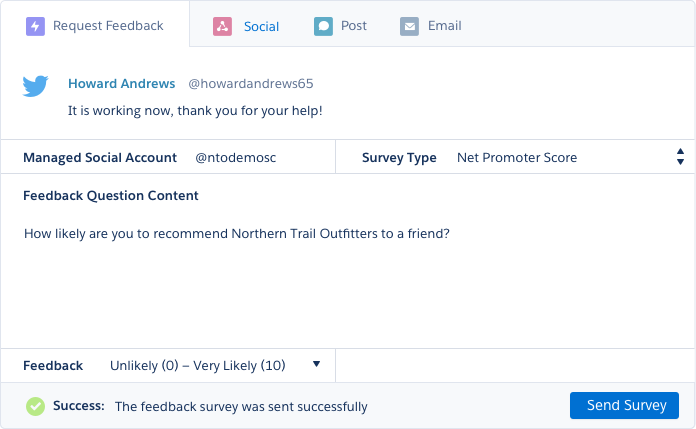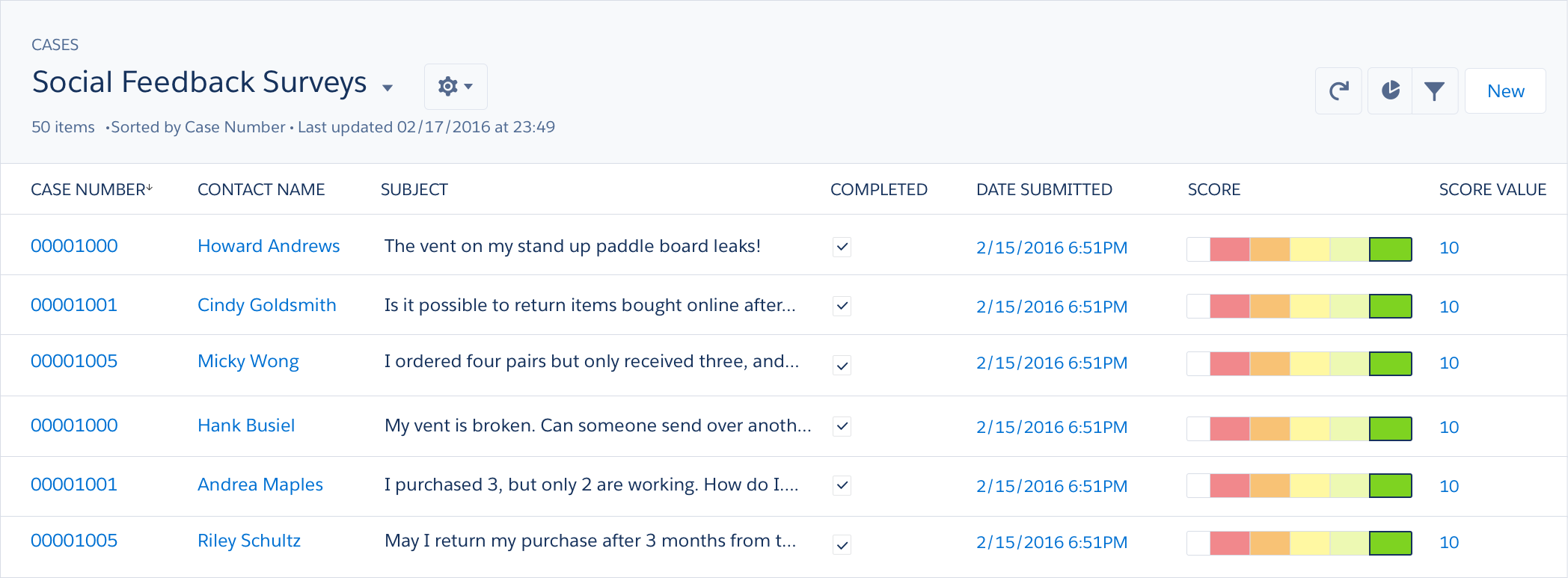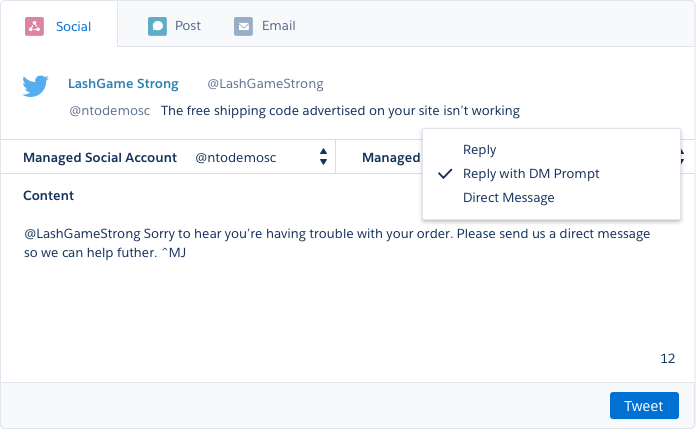Salesforce Announces New Social Customer Service Innovations for Twitter
OREANDA-NEWS. February 22, 2016. Today, Salesforce is taking the next step in our longstanding strategic partnership with Twitter and further empowering our customers to use the real-time platform for customer service. We’re announcing integration with two new Twitter customer service features — Customer Feedback, a new experience that allows users to privately share their opinions with businesses after service interactions, and Direct Message prompts, a simple way for users to transition from public conversations to private Direct Message with companies. These new features will be integrated with the Salesforce Customer Success Platform.
Customers today seek out the easiest and most convenient ways to give feedback or get help. Twitter is one of the most popular platforms for customer service because it gives users a way to directly interact with companies and quickly get solutions. In fact, customer service on Twitter has grown 2.5x over the last two years. This social revolution has created a new expectation for businesses to provide instant, always available customer service.
Customer Feedback on Twitter
Customer Feedback is a new experience on Twitter that allows users to privately share their opinions with businesses after service interactions, all directly within Twitter. After handling a customer service inquiry on Twitter, a business can immediately share a survey in a Direct Message with the customer via Salesforce Service Cloud, increasing the likelihood of getting accurate, timely feedback as the customer is kept in one channel during the entire experience.


With Salesforce integration to Twitter Customer Feedback, companies can incorporate feedback into the overall customer experience and tailor customer journeys. For example, when an airline sees a service complaint on Twitter, after resolving the issue, it can send the customer a quick survey directly in that customer’s feed, asking them for feedback on their experience. Once received, the feedback is automatically routed into Salesforce, where it can be analyzed and acted upon by service and marketing teams.
Public to Private Direct Messages on Twitter
While Twitter is a public platform for customer service, there are occasions when resolving individual customer issues and sharing information in private is the best option. Direct Messages are the ideal channel for these scenarios, and now it’s easier for customers to have offline conversations without businesses having to awkwardly ask in public, “Please follow me so I can DM you.”
Now, a service agent can start a private conversation with a customer — even if the customer is not following the business on Twitter — with a prompt asking them to “Send a private message.” This makes it much easier for a business to start a private conversation since the customer and service agent don’t need to establish a following relationship first. From Salesforce, the service agent or social media manager can directly send private message prompts, allowing them to identify and resolve customer service issues faster and more efficiently.

Today’s announcement is the latest step that Salesforce has taken to combine the best of the world’s #1 CRM with Twitter, one of the world’s most popular real-time platforms. With these new customer service features, companies will be able to deliver fast and personalized service to customers from Salesforce. Learn more about the importance of providing service through social channels in our free report, “Service Through Social: Keep Your Customers Coming Back.”
Pricing and Availability
These new features will be available to Service Cloud customers already using Social Customer Service at no additional cost. Customer Feedback is expected to be supported in Salesforce later in Q1 FY 2017 and Public to Private Direct Messages is expected to be available in Q3 FY 2017.
Any unreleased services or features referenced in this blog or other public statements are not currently available and may not be delivered on time or at all. Customers who purchase Salesforce applications should make their purchase decisions based upon features that are currently available.




Комментарии